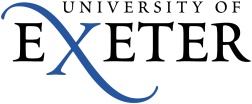An exciting project involving a collaboration of Cornwall Mining Alliance members is looking at ways to track the pollution of rivers by mines using remote sensing. The team is testing the technique on abandoned mine sites in Cornwall.
Most environmental monitoring programmes rely on a ‘boots on the ground’ approach. For active mines, this means frequent sampling of specific points to ensure regulatory compliance. For abandoned mines, it is often carried out in response to an incident. Hands-on monitoring is labour intensive, time-consuming and needs follow-on analyses. It often misses opportunities to prevent pollution, and related liabilities, or benefit the wider river catchment and its users.
This project involves the development of a remote monitoring tool, which is designed to be used for land, environmental and liability management. The tool applies novel processing to Sentinel-2 and drone-borne spectral signatures, to both identify problem sites at a regional scale and track pollution at a local level. The combination can serve as both an early warning system and a guide to where thresholds have already been exceeded. The tool aims to enable targeted monitoring, proactive management and better-informed field surveys of river catchments.
Early results have provided new insight into contaminated sites in the Carnon River valley, Cornwall, where pollution pathways have been mapped by correlating the spectral responses of known and proxy minerals of acid mine drainage. The distributions have been compared with ground truth data, to provide an indication of where mobilised toxic heavy metals may exceed recommended thresholds.
The project has been led by Carrak Consulting Ltd, in partnership with North Coast Consulting Ltd and with essential contributions from Camborne School of Mines (University of Exeter). The activity has been carried out and co-funded by the European Space Agency (ESA) under its programme ‘Space Solutions’. Project stakeholders include regional and national regulators, as well as local land and mineral owners.
Given the complexity of Cornish mine wastes, further development is proposed to validate the technique in a range of conditions. Carrak Consulting Ltd is also exploring the potential of spectral matching to enable rapid mapping of heavy metal contaminated soils.






Fantastic, and really interesting, my mate Josh and I lived in those workings back in the summer of 1968 and…
Part of Cornwall's rich Mining Heritage which sadly many people living here today do not know ever existed. A very…
Coming from a very old Perranporth family with links to mining though my grandfather and great grandfather I am very…
[…] honour of being number 100 goes to Peter Sheppard and Drillserve Ltd – good to have you on board…
[…] a new display at the museum. The project will combine the technical and academic expertise of Camborne School of…